-
 Bitcoin
Bitcoin $104,517.5551
0.58% -
 Ethereum
Ethereum $2,569.0201
3.27% -
 Tether USDt
Tether USDt $1.0000
-0.01% -
 XRP
XRP $2.4185
2.35% -
 BNB
BNB $669.5529
2.09% -
 Solana
Solana $175.7159
1.16% -
 USDC
USDC $1.0000
0.00% -
 Dogecoin
Dogecoin $0.2442
5.62% -
 Cardano
Cardano $0.8260
4.19% -
 TRON
TRON $0.2666
2.18% -
 Sui
Sui $4.1738
5.52% -
 Chainlink
Chainlink $17.4781
6.23% -
 Pi
Pi $1.5392
64.66% -
 Avalanche
Avalanche $25.6671
4.54% -
 Shiba Inu
Shiba Inu $0.0...01691
7.02% -
 Stellar
Stellar $0.3133
3.14% -
 Hedera
Hedera $0.2150
4.59% -
 Toncoin
Toncoin $3.4954
4.27% -
 Hyperliquid
Hyperliquid $25.0132
3.84% -
 Polkadot
Polkadot $5.2506
4.76% -
 Bitcoin Cash
Bitcoin Cash $413.1247
0.40% -
 Litecoin
Litecoin $102.9805
2.43% -
 UNUS SED LEO
UNUS SED LEO $8.3990
1.47% -
 Monero
Monero $344.6651
6.72% -
 Pepe
Pepe $0.0...01512
17.50% -
 Bitget Token
Bitget Token $4.9129
2.01% -
 Dai
Dai $0.9999
0.00% -
 Ethena USDe
Ethena USDe $1.0002
0.01% -
 Uniswap
Uniswap $7.1712
1.66% -
 Bittensor
Bittensor $467.4616
4.29%
What does NEO mean? How does NEO support smart contracts?
NEO, known as "Chinese Ethereum," digitizes assets using smart contracts, offering a robust development environment and the NeoVM for secure, efficient execution.
May 12, 2025 at 01:00 pm
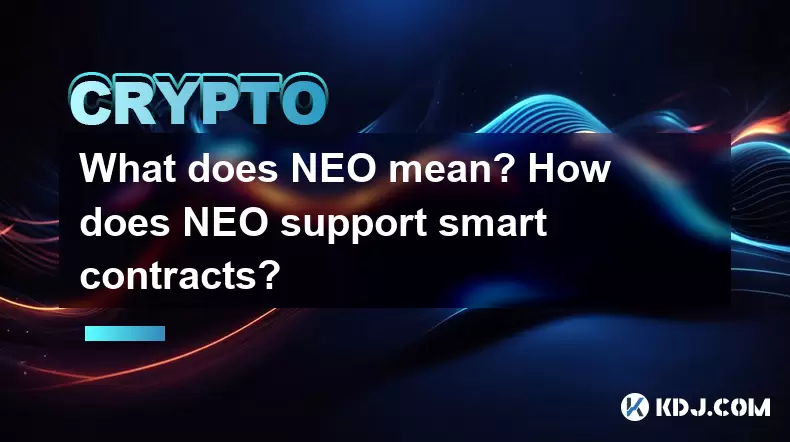
What does NEO mean? How does NEO support smart contracts?
NEO, often referred to as the "Chinese Ethereum," is a blockchain platform and cryptocurrency that aims to digitize assets and automate the management of digital assets using smart contracts. The term "NEO" itself has a dual meaning: it stands for "new" in Greek, signifying a new era in blockchain technology, and it is also an acronym for "Neo," a term meaning "young" or "new" in various languages, symbolizing innovation and the future of digital assets.
The Origin and Purpose of NEO
NEO was founded in 2014 by Da Hongfei and Erik Zhang under the initial name "AntShares." It rebranded to NEO in 2017 to better reflect its mission and vision. The primary goal of NEO is to enable the digitization and automation of asset management through the use of smart contracts. This means that NEO is designed to facilitate the creation, management, and transfer of digital assets on a blockchain, making transactions more efficient, transparent, and secure.
Key Features of NEO
NEO distinguishes itself from other cryptocurrencies with several unique features. Firstly, NEO uses a delegated Byzantine Fault Tolerance (dBFT) consensus mechanism, which allows for fast transaction confirmations and high scalability. Secondly, NEO has a dual-token system consisting of NEO and GAS. NEO tokens represent ownership of the NEO network and are used for voting in the governance of the network, while GAS is used to pay for transaction fees and smart contract execution. Lastly, NEO supports the development and execution of smart contracts, which are crucial for its mission to digitize assets.
How NEO Supports Smart Contracts
Smart contracts are self-executing contracts with the terms of the agreement directly written into code. They automatically execute actions when predefined conditions are met, eliminating the need for intermediaries and increasing efficiency. NEO supports smart contracts through its platform in several ways:
Development Environment: NEO provides a robust development environment for creating smart contracts. Developers can use various programming languages such as C#, Java, and Python to write smart contracts, making it accessible to a wide range of developers.
Execution Environment: NEO's smart contracts are executed on the NEO Virtual Machine (NeoVM), which ensures that the contracts run securely and efficiently. The NeoVM is designed to be compatible with multiple programming languages, allowing developers to choose the language that best suits their needs.
Interoperability: NEO supports interoperability between different blockchain systems, which means that smart contracts on NEO can interact with other blockchains. This feature enhances the utility and flexibility of smart contracts on the NEO platform.
Governance and Voting: NEO token holders can vote on the council members who manage the network. This governance system ensures that the platform remains decentralized and that smart contract development and execution align with the community's interests.
Practical Applications of Smart Contracts on NEO
Smart contracts on NEO have a wide range of applications, particularly in the realm of asset digitization and management. Here are some practical examples:
Digital Asset Management: NEO allows for the creation and management of digital assets such as real estate, stocks, and intellectual property. Smart contracts can automate the transfer and management of these assets, making transactions more efficient and transparent.
Decentralized Applications (DApps): Developers can build decentralized applications on the NEO platform that utilize smart contracts. These DApps can range from financial services to gaming and social networks, all benefiting from the automation and security provided by smart contracts.
Identity Verification: Smart contracts on NEO can be used for identity verification and management, ensuring secure and verifiable digital identities. This can be particularly useful in areas such as voting systems and online authentication.
Supply Chain Management: Smart contracts can automate and streamline supply chain processes, ensuring transparency and traceability of goods from production to delivery. This can significantly reduce costs and increase efficiency in supply chain management.
Steps to Deploy a Smart Contract on NEO
Deploying a smart contract on the NEO platform involves several steps. Here is a detailed guide on how to do it:
Choose a Programming Language: Decide which programming language you want to use for your smart contract. NEO supports C#, Java, and Python, among others.
Set Up the Development Environment: Install the necessary tools and software for your chosen programming language. For example, if you are using C#, you will need to install Visual Studio and the NEO development framework.
Write the Smart Contract: Use your chosen programming language to write the smart contract. Ensure that the contract includes all the necessary logic and conditions for its execution.
Compile the Smart Contract: Use the appropriate compiler for your programming language to compile the smart contract into bytecode that can be executed on the NeoVM.
Deploy the Smart Contract: Use the NEO blockchain explorer or a NEO wallet to deploy the compiled smart contract onto the NEO network. This typically involves sending a deployment transaction with the necessary parameters and paying the required GAS fee.
Test the Smart Contract: Before using the smart contract in a production environment, thoroughly test it to ensure it functions as intended. You can use testnets provided by NEO for this purpose.
Interact with the Smart Contract: Once deployed and tested, you can interact with the smart contract by sending transactions to invoke its functions. These interactions can be managed through a NEO wallet or a custom application.
Frequently Asked Questions
Q: Can I use NEO smart contracts for financial transactions?
A: Yes, NEO smart contracts can be used for financial transactions. They can automate processes such as payments, loans, and trading, ensuring secure and efficient transactions without the need for intermediaries.
Q: How does NEO's dBFT consensus mechanism work?
A: NEO's dBFT consensus mechanism works by selecting a group of nodes, known as speakers, to propose and vote on blocks. If a majority of the speakers agree on a block, it is added to the blockchain. This process allows for fast transaction confirmations and high scalability.
Q: What is the difference between NEO and GAS?
A: NEO and GAS are the two tokens of the NEO ecosystem. NEO tokens represent ownership of the network and are used for voting in governance, while GAS is used to pay for transaction fees and smart contract execution. NEO tokens are indivisible and come in whole units, whereas GAS is divisible.
Q: Is it possible to migrate smart contracts from other blockchains to NEO?
A: Yes, it is possible to migrate smart contracts from other blockchains to NEO, thanks to NEO's interoperability features. However, the process may require rewriting the smart contract to be compatible with the NEO platform and its virtual machine.
Disclaimer:info@kdj.com
The information provided is not trading advice. kdj.com does not assume any responsibility for any investments made based on the information provided in this article. Cryptocurrencies are highly volatile and it is highly recommended that you invest with caution after thorough research!
If you believe that the content used on this website infringes your copyright, please contact us immediately (info@kdj.com) and we will delete it promptly.
- The TRUMP token gained 15% over the past week and now trades near $14.47
- 2025-05-12 16:30:12
- Bitcoin nears its all-time high, reaching $104,900
- 2025-05-12 16:30:12
- Can Dogwifhat Repeat Its Early 2024 Pump? Here’s Why WIF Price Could Hit $3 Soon
- 2025-05-12 16:25:13
- Bitcoin (BTC) Yield Generation Methods: Explore Ways to Earn Interest on Your Holdings
- 2025-05-12 16:25:13
- Dogecoin’s RSI Remains Below Overbought Levels, Indicating Room for Growth
- 2025-05-12 16:20:13
- Simply discuss the subsequent situation.
- 2025-05-12 16:20:13
Related knowledge
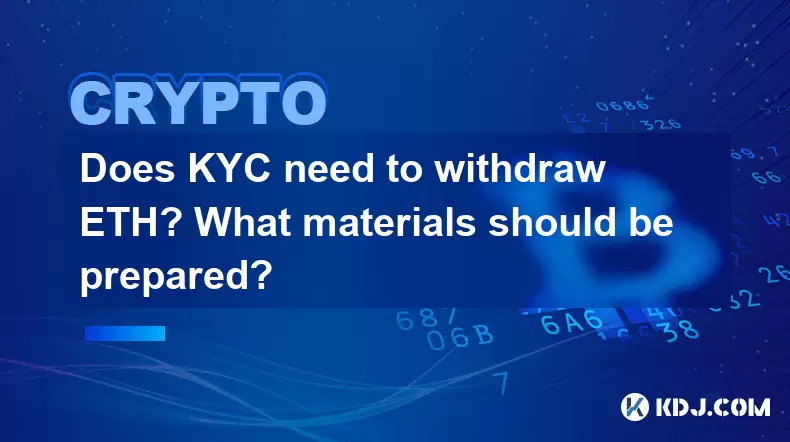
Does KYC need to withdraw ETH? What materials should be prepared?
May 12,2025 at 04:56pm
Does KYC Need to be Completed to Withdraw ETH? What Materials Should Be Prepared? Withdrawing Ethereum (ETH) from cryptocurrency exchanges often involves a process known as Know Your Customer (KYC). KYC is a mandatory procedure implemented by many financial institutions and cryptocurrency platforms to verify the identity of their users. This article wil...
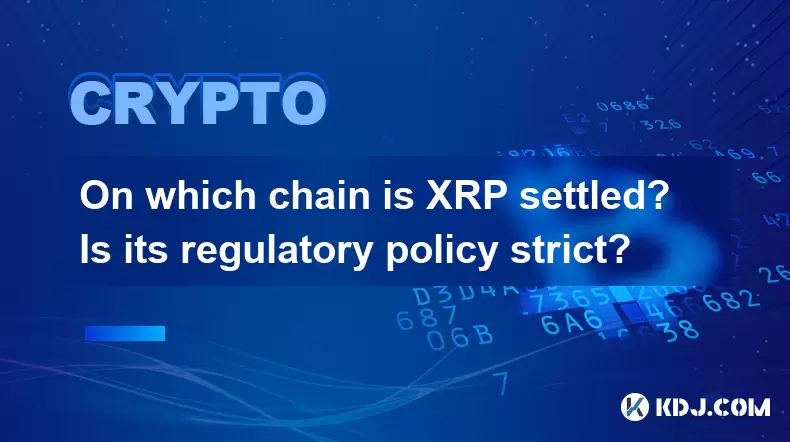
On which chain is XRP settled? Is its regulatory policy strict?
May 12,2025 at 03:14pm
XRP, a digital asset created by Ripple Labs, operates on a unique distributed ledger technology called the XRP Ledger. This ledger is distinct from other well-known blockchains like Bitcoin or Ethereum, as it was specifically designed to facilitate fast and efficient cross-border payments. The XRP Ledger does not rely on mining, instead, it uses a conse...
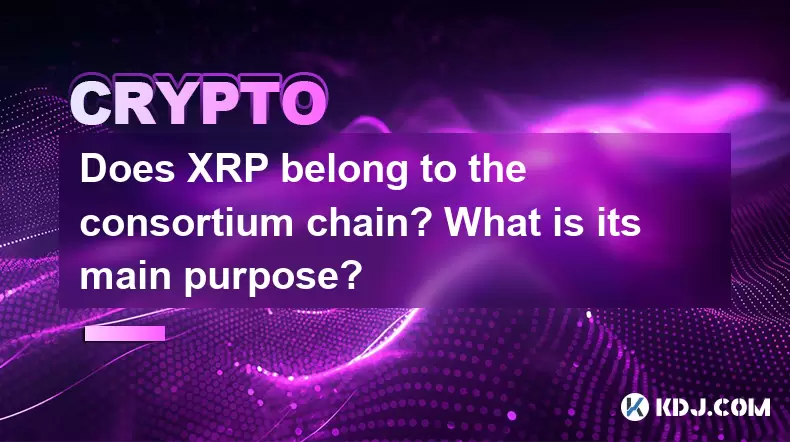
Does XRP belong to the consortium chain? What is its main purpose?
May 12,2025 at 02:28pm
Introduction to XRP and Its ClassificationXRP is a cryptocurrency created by Ripple Labs Inc. It is designed to facilitate fast and low-cost international money transfers. One of the key questions often asked about XRP is whether it belongs to the consortium chain category. Understanding the nature of XRP and its underlying technology, the XRP Ledger, i...
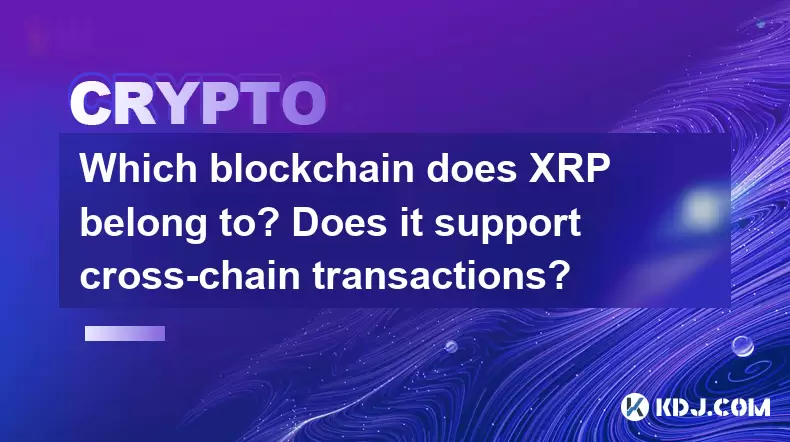
Which blockchain does XRP belong to? Does it support cross-chain transactions?
May 12,2025 at 04:00pm
XRP is a cryptocurrency that belongs to the Ripple blockchain. The Ripple blockchain, also known as the RippleNet, is a decentralized payment protocol that facilitates fast and low-cost international money transfers. The primary function of XRP within this ecosystem is to serve as a bridge currency to enable liquidity and efficiency in cross-border tran...
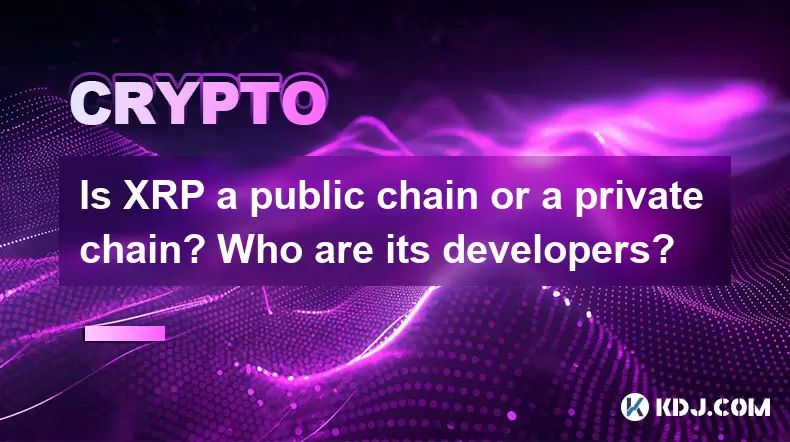
Is XRP a public chain or a private chain? Who are its developers?
May 12,2025 at 02:36pm
Introduction to XRPXRP is a cryptocurrency that was created by Ripple Labs Inc. It is designed to facilitate fast and low-cost international money transfers. One of the common questions about XRP is whether it is a public chain or a private chain, and who its developers are. This article will delve into these aspects in detail. Understanding Public and ...
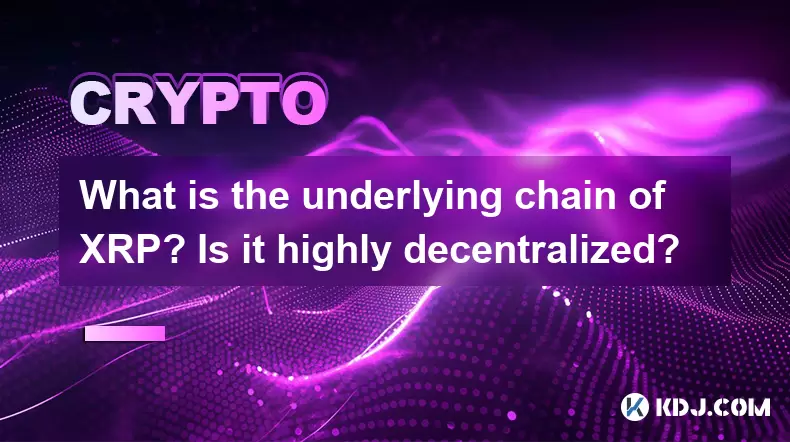
What is the underlying chain of XRP? Is it highly decentralized?
May 12,2025 at 03:28pm
The underlying chain of XRP is the XRP Ledger. This distributed ledger technology is designed to facilitate fast and efficient cross-border payments. The XRP Ledger is unique in that it does not rely on traditional blockchain technology but instead uses a consensus protocol to validate transactions. This protocol is managed by a network of servers, know...

Does KYC need to withdraw ETH? What materials should be prepared?
May 12,2025 at 04:56pm
Does KYC Need to be Completed to Withdraw ETH? What Materials Should Be Prepared? Withdrawing Ethereum (ETH) from cryptocurrency exchanges often involves a process known as Know Your Customer (KYC). KYC is a mandatory procedure implemented by many financial institutions and cryptocurrency platforms to verify the identity of their users. This article wil...

On which chain is XRP settled? Is its regulatory policy strict?
May 12,2025 at 03:14pm
XRP, a digital asset created by Ripple Labs, operates on a unique distributed ledger technology called the XRP Ledger. This ledger is distinct from other well-known blockchains like Bitcoin or Ethereum, as it was specifically designed to facilitate fast and efficient cross-border payments. The XRP Ledger does not rely on mining, instead, it uses a conse...

Does XRP belong to the consortium chain? What is its main purpose?
May 12,2025 at 02:28pm
Introduction to XRP and Its ClassificationXRP is a cryptocurrency created by Ripple Labs Inc. It is designed to facilitate fast and low-cost international money transfers. One of the key questions often asked about XRP is whether it belongs to the consortium chain category. Understanding the nature of XRP and its underlying technology, the XRP Ledger, i...

Which blockchain does XRP belong to? Does it support cross-chain transactions?
May 12,2025 at 04:00pm
XRP is a cryptocurrency that belongs to the Ripple blockchain. The Ripple blockchain, also known as the RippleNet, is a decentralized payment protocol that facilitates fast and low-cost international money transfers. The primary function of XRP within this ecosystem is to serve as a bridge currency to enable liquidity and efficiency in cross-border tran...

Is XRP a public chain or a private chain? Who are its developers?
May 12,2025 at 02:36pm
Introduction to XRPXRP is a cryptocurrency that was created by Ripple Labs Inc. It is designed to facilitate fast and low-cost international money transfers. One of the common questions about XRP is whether it is a public chain or a private chain, and who its developers are. This article will delve into these aspects in detail. Understanding Public and ...

What is the underlying chain of XRP? Is it highly decentralized?
May 12,2025 at 03:28pm
The underlying chain of XRP is the XRP Ledger. This distributed ledger technology is designed to facilitate fast and efficient cross-border payments. The XRP Ledger is unique in that it does not rely on traditional blockchain technology but instead uses a consensus protocol to validate transactions. This protocol is managed by a network of servers, know...
See all articles





















































































